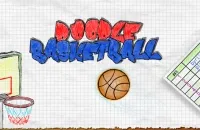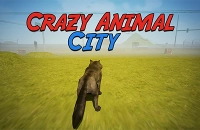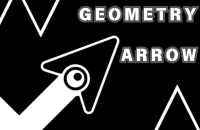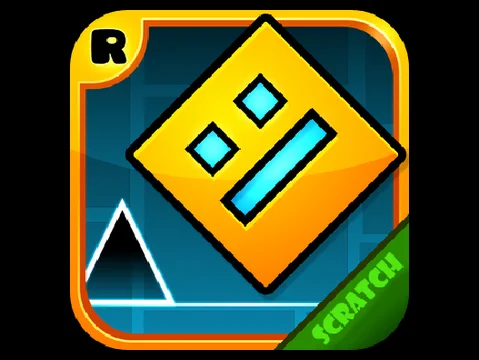Google Minesweeper
Google Minesweeper
Connecting to game server...
0% complete

Google Minesweeper
Click to start playing
🕹️ You May Also Like












Google Minesweeper
Google's polished take on the classic mine-finding puzzle with modern design and smooth interface. Maintains strategic depth while adding quality improvements.
Google Minesweeper brings the classic logic puzzle into the modern era with sleek design and smooth gameplay. This version maintains all the strategic depth of the original while adding quality-of-life improvements and a clean, intuitive interface. Perfect for both newcomers learning the rules and veterans who want a polished minesweeper experience with reliable mechanics.
🎮 How to Play
- 1Click to reveal squares
- 2Right-click to flag mines
- 3Use number clues for deduction
💡 Game Tips
- 💡Google's version has helpful visual cues
- 💡Clean interface reduces distractions
- 💡Same strategic principles apply
- 💡Good for learning minesweeper basics
📚Complete Strategy Guide
Master Google Minesweeper with our comprehensive guide and pro tips
Google Minesweeper represents the digital evolution of one of computer gaming's most intellectually challenging puzzles. This deceptively simple game combines logical deduction, probability assessment, and spatial reasoning into an addictive package that has captivated millions of players worldwide. Whether you're a complete beginner struggling with basic concepts or an advanced player seeking to minimize solve times, this comprehensive guide will elevate your Minesweeper skills to expert levels.
Understanding Minesweeper Fundamentals
Game Objective and Rules
Primary Goal:
- Reveal all safe squares - Uncover every non-mine cell on the board
- Avoid mines - Never click directly on a mine location
- Use number clues - Numbers indicate adjacent mines for logical deduction
- Flag suspected mines - Mark dangerous squares to avoid accidental clicks
Core Mechanics:
- Left click - Reveals the contents of a square
- Right click - Places or removes flag markers
- Middle click - Reveals all unflagged adjacent squares (when number conditions are met)
- First click safety - Most versions guarantee the first click is never a mine
Board Layout and Difficulty Levels
Beginner (9x9, 10 mines):
- Learning platform - Perfect for understanding basic concepts
- Low complexity - Manageable number of variables
- Quick games - Typical solve times: 10-60 seconds for experts
- Pattern recognition - Develop fundamental mine patterns
Intermediate (16x16, 40 mines):
- Balanced challenge - Requires solid logical skills
- Medium complexity - More advanced pattern recognition needed
- Standard competition - Common difficulty for timed competitions
- Solve times - Expert players: 30-180 seconds
Expert (30x16, 99 mines):
- Ultimate challenge - Demands mastery of all techniques
- High complexity - Complex interactions between multiple areas
- Competitive standard - Used in world championship competitions
- Expert solve times - Top players: 60-300+ seconds
Number System Mastery
Understanding Numbers:
- Adjacent count - Each number shows mines in surrounding 8 squares
- Diagonal inclusion - Adjacent includes diagonal neighbors
- Zero implications - Zeros mean all 8 neighbors are safe
- Maximum value - Highest possible number is 8 (surrounded by mines)
Number Pattern Recognition:
- 1s and 2s - Most common numbers, learn standard configurations
- 3s and 4s - Moderate complexity, multiple solution possibilities
- 5s and higher - Rare occurrences, usually indicate dense mine areas
- Pattern combinations - How different numbers interact with each other
Basic Strategy Techniques
Opening Move Strategy
Safe Opening Principles:
- Corner starts - Corners often provide good initial information
- Edge preference - Edge squares have fewer adjacent squares to consider
- Center avoidance - Center squares have 8 neighbors, more complex initially
- Multiple clicks - Make several opening clicks before deep analysis
Information Gathering:
- Reveal large areas - Look for zeros that open up significant territory
- Identify constraints - Find numbers that immediately restrict mine locations
- Create working areas - Establish regions where logical deduction can begin
- Avoid premature flagging - Don't flag mines until you're certain
Fundamental Logical Deduction
Basic Satisfaction:
- Count matching - When flags around a number equal its value
- Safe revelation - All remaining adjacent squares are mine-free
- Automatic clearing - Use chord clicking to reveal safe neighbors
- Chain reactions - One deduction often triggers multiple others
Constraint Analysis:
- Mine requirements - Each number must have exactly its value in adjacent mines
- Impossibility elimination - Rule out configurations that violate constraints
- Forced moves - Situations where only one solution satisfies all constraints
- Multiple constraint intersection - Use overlapping number requirements
Progressive Revelation Technique
Systematic Approach:
- Work methodically - Don't jump randomly around the board
- Complete local areas - Finish analyzing regions before moving on
- Maintain focus - Keep track of current deduction chains
- Document mental state - Remember what you've determined about each area
Priority System:
- Certain moves first - Always make moves you're 100% confident about
- High probability second - Take calculated risks on likely scenarios
- Guessing last resort - Only guess when no logical moves remain
- Strategic guessing - When forced to guess, choose positions that provide maximum information
Intermediate Pattern Recognition
Common Mine Configurations
The "1-2-1" Pattern:
- Recognition - Three consecutive numbers: 1, 2, 1 along an edge
- Solution - Mine is always directly adjacent to the "2"
- Variations - Pattern works in multiple orientations
- Applications - Extremely common, master this pattern completely
The "1-2-2-1" Pattern:
- Setup - Four numbers in sequence along edge or corner
- Analysis - Creates specific constraints on mine placement
- Solution method - Work from outside numbers inward
- Advanced variations - Pattern adapts to different board positions
Corner Patterns:
- 1 in corner - Mine must be in one of three adjacent squares
- 2 in corner - More complex analysis required
- 3 in corner - Usually indicates multiple nearby mines
- Solution techniques - Use adjacent numbers for disambiguation
Advanced Pattern Recognition
Complex Intersections:
- Multiple number overlap - When several numbers constrain the same area
- Contradiction elimination - Use impossible configurations to narrow options
- Systematic testing - Mentally test each possibility against all constraints
- Pattern memory - Remember solutions to recurring configurations
Edge and Corner Advanced Patterns:
- Multi-number chains - Sequences of 3+ numbers with interdependent solutions
- Wrap-around effects - How patterns behave at board edges
- Symmetry recognition - Identify symmetric patterns for faster solving
- Exception handling - Recognize when standard patterns don't apply
Advanced Techniques
Probability-Based Decision Making
When Logic Fails:
- Calculate odds - Determine probability of mines in uncertain squares
- Risk assessment - Choose squares with lowest mine probability
- Information value - Prioritize moves that reveal maximum new information
- Strategic positioning - Consider how revealing each square affects future options
Mathematical Approach:
- Count constraints - Tally known mines versus total mine count
- Remaining possibilities - Calculate how many mines must exist in unclear areas
- Probability distribution - Estimate likelihood across different scenarios
- Expected value - Choose moves with best overall expected outcomes
Speed Optimization Techniques
Efficient Movement:
- Mouse economy - Minimize unnecessary cursor movement
- Click patterns - Develop muscle memory for common clicking sequences
- Keyboard shortcuts - Use keyboard commands where available
- Screen positioning - Arrange game window for optimal access
Mental Efficiency:
- Pattern recognition speed - Instantly identify common configurations
- Parallel processing - Analyze multiple board areas simultaneously
- Decision streamlining - Reduce time spent on obvious moves
- Focus management - Maintain concentration without overthinking
Expert-Level Problem Solving
Complex Scenario Analysis:
- Multi-region interdependence - When distant board areas constrain each other
- Global mine counting - Use total mine count for final deductions
- Elimination strategies - Systematically rule out impossible configurations
- Advanced guessing - When forced to guess, maximize information gain
Tournament Techniques:
- Time management - Balance speed with accuracy for competitive play
- Pressure performance - Maintain skills under tournament conditions
- Consistent execution - Develop reliable performance rather than occasional brilliance
- Mental preparation - Pre-game routines for optimal focus
Mistake Analysis and Prevention
Common Logical Errors
Problem: Premature Flagging
- Symptom - Marking mines before completely analyzing the situation
- Consequence - Incorrect flags lead to solving errors and confusion
- Solution - Only flag when absolutely certain of mine location
- Prevention - Complete all logical deductions before placing flags
Problem: Tunnel Vision
- Symptom - Focusing on one board area while missing obvious moves elsewhere
- Consequence - Inefficient solving and missed opportunities
- Solution - Regularly scan entire board for new opportunities
- Prevention - Develop systematic board scanning habits
Strategic Mistakes
Problem: Information Waste
- Symptom - Making random clicks without considering information value
- Consequence - Missing opportunities for logical deduction
- Solution - Always consider what each click might reveal
- Prevention - Develop habit of thinking before clicking
Problem: Guess Timing
- Symptom - Guessing too early when logical solutions exist
- Consequence - Unnecessary risks and potential failure
- Solution - Exhaust all logical possibilities before guessing
- Prevention - Practice patience and systematic analysis
Technical Errors
Problem: Misclicking
- Symptom - Accidentally clicking wrong squares or wrong mouse buttons
- Consequence - Unintended mine detonation or incorrect flag placement
- Solution - Slow down and focus on precise clicking
- Prevention - Practice accurate mouse control and develop clicking rhythm
Problem: Flag Confusion
- Symptom - Losing track of flag locations or meanings
- Consequence - Incorrect deductions based on wrong flag information
- Solution - Regularly review flag placements for accuracy
- Prevention - Use systematic flagging approach
Mental Game and Psychology
Concentration Management
Focus Techniques:
- Environmental control - Eliminate distractions during play
- Mental warm-up - Start with easier puzzles to build focus
- Breathing awareness - Use controlled breathing to maintain calm
- Progressive difficulty - Gradually increase challenge level
Pressure Handling:
- Accept mistakes - Don't let errors affect subsequent performance
- Process focus - Concentrate on technique rather than outcomes
- Time pressure adaptation - Practice under timed conditions
- Confidence building - Celebrate successful deductions and solutions
Long-Term Improvement
Skill Development Path:
- Pattern library - Build mental database of common configurations
- Speed building - Gradually increase solving pace without sacrificing accuracy
- Consistency training - Focus on reliable performance rather than lucky streaks
- Advanced challenges - Seek out difficult custom boards for practice
Performance Analysis:
- Track statistics - Monitor solve times and success rates
- Identify weaknesses - Focus practice on areas needing improvement
- Study failures - Analyze lost games to understand mistake patterns
- Gradual improvement - Set incremental goals for steady progress
Technology and Tools
Software Variations
Classic Minesweeper:
- Microsoft version - Original Windows implementation
- Google Minesweeper - Browser-based version with clean interface
- Mobile adaptations - Touch-screen optimized versions
- Custom implementations - Various online versions with different features
Advanced Features:
- Undo functionality - Some versions allow mistake correction
- Hint systems - Automated suggestions for next moves
- Statistics tracking - Detailed performance analytics
- Custom board sizes - Non-standard dimensions and mine counts
Competitive Play
Tournament Standards:
- Official regulations - Standard rules for competitive play
- Time limits - Various formats from speed solving to marathon sessions
- Scoring systems - How competitions evaluate performance
- Equipment standards - Approved software and hardware for competitions
Online Communities:
- Leaderboards - Global rankings for different skill levels
- Strategy discussion - Forums for sharing techniques and analysis
- Custom challenges - User-created puzzle variants
- Tutorial resources - Community-generated learning materials
Conclusion: Mastering the Art of Logical Deduction
Google Minesweeper stands as one of gaming's purest tests of logical reasoning and pattern recognition. Unlike games that rely on reflexes or memorization, Minesweeper rewards careful analysis, systematic thinking, and the ability to manage uncertainty under pressure. The skills developed through serious Minesweeper practice—logical deduction, risk assessment, pattern recognition, and systematic problem-solving—transfer valuable cognitive abilities to many other areas of life.
Essential Success Principles:
- Logic over intuition - Always base moves on sound reasoning
- Patience over speed - Accuracy should precede speed in development
- System over randomness - Develop consistent approaches to analysis
- Learning from failure - Every lost game contains valuable lessons
- Progressive challenge - Gradually increase difficulty as skills improve
Your Mastery Journey:
- Foundation building - Master basic number interpretation and simple patterns
- Pattern recognition - Learn standard configurations and their solutions
- Advanced reasoning - Develop skills for complex multi-constraint scenarios
- Speed development - Build efficiency while maintaining accuracy
- Expert performance - Achieve consistent, reliable high-level solving
Final Thoughts: Minesweeper's enduring appeal lies in its perfect balance between accessibility and depth. While anyone can learn the rules in minutes, achieving true mastery requires developing sophisticated mental skills that can take years to perfect. Each game presents a unique logical puzzle that rewards careful analysis and systematic thinking.
The grid awaits your logical prowess. Behind those innocent gray squares lies a challenge that has tested minds for generations. Will you develop the analytical skills to consistently emerge victorious?